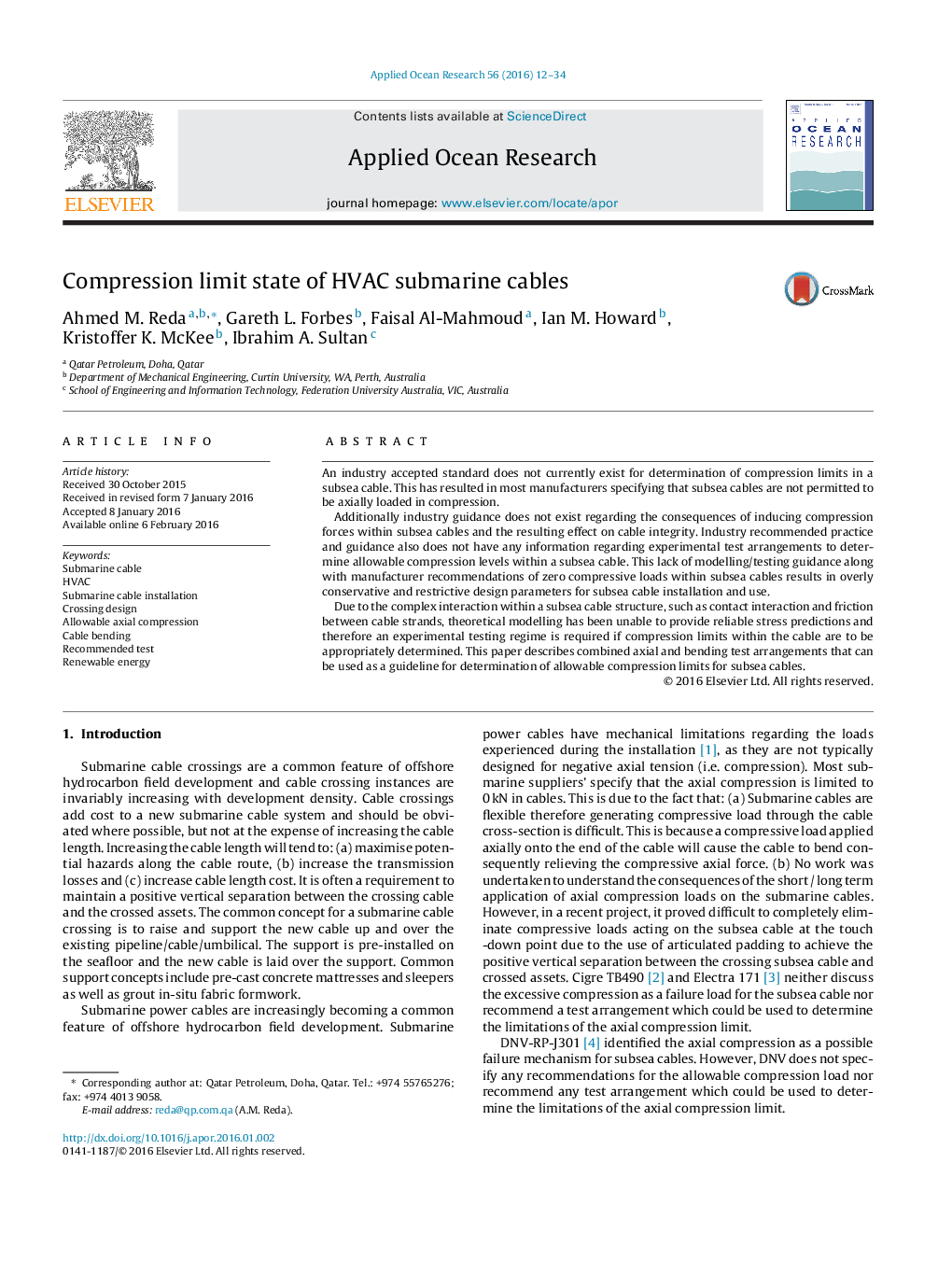| Article ID | Journal | Published Year | Pages | File Type |
|---|---|---|---|---|
| 1719811 | Applied Ocean Research | 2016 | 23 Pages |
•The paper addresses an industry knowledge-gap in determining the compression limits of HVAC submarine cables.•Present a new testing arrangement and testing procedure which can be used to determine the allowable axial compression limit for a subsea cable/umbilical.•Provide guidance for the acceptance criteria for compression loads on a submarine cable during installation.•Provides information on tests and visual inspections that can be performed after the compression-bend tests.
An industry accepted standard does not currently exist for determination of compression limits in a subsea cable. This has resulted in most manufacturers specifying that subsea cables are not permitted to be axially loaded in compression.Additionally industry guidance does not exist regarding the consequences of inducing compression forces within subsea cables and the resulting effect on cable integrity. Industry recommended practice and guidance also does not have any information regarding experimental test arrangements to determine allowable compression levels within a subsea cable. This lack of modelling/testing guidance along with manufacturer recommendations of zero compressive loads within subsea cables results in overly conservative and restrictive design parameters for subsea cable installation and use.Due to the complex interaction within a subsea cable structure, such as contact interaction and friction between cable strands, theoretical modelling has been unable to provide reliable stress predictions and therefore an experimental testing regime is required if compression limits within the cable are to be appropriately determined. This paper describes combined axial and bending test arrangements that can be used as a guideline for determination of allowable compression limits for subsea cables.
